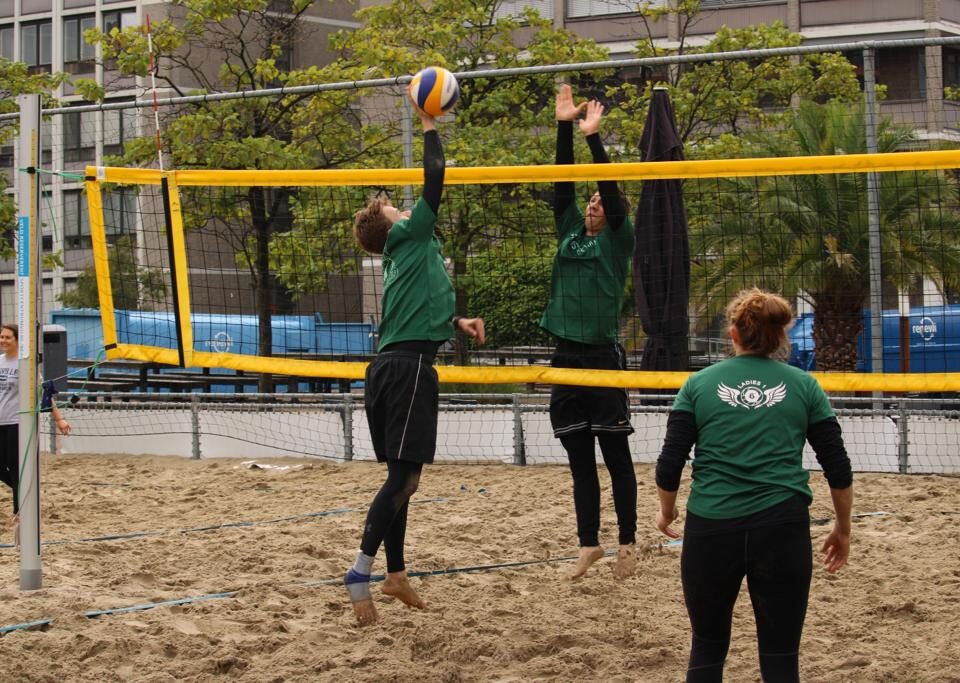
5x the best SVU activities
23 december 2022
Let’s talk about… food!
22 februari 2023Written by: Auke Dijkstra
I want to start this article with a disclaimer to tell you the jump serve is a very personal and complicated thing. Everyone does it in their own way. This article is written with the intent to give you things to consider well learning a jump serve. I hope you enjoy!

When you are jump serving you want to emulate what you do when spiking a ball. Preferably you want to start with a 3 step approach, just like when you are attacking at the net. Some do 4 steps or even 5 steps, which also works fine. As long as you last 3 steps are consistent, you can take all the steps you need. The reason I recommend the 3 step approach is because it is the easiest to time.
The toss or the way you throw the ball up is what comes first when going through the jump serve motion. It does not matter with which hand you toss the ball up. It can be your strong hand, weak hand, hitting hand or off hand. You can even toss the ball with both hands. I do recommend tossing the ball with one hand to increase the amount of topspin you give the ball before even hitting it. So when you serve, the ball will definitely drop and you can hit the ball harder with less risk of it
flying out of bounce. The reason you would want to toss the ball with two hands is to decrease the amount of spin. This will make the ball drive deeper into the court and you will have more control over the ball.
Whether you toss the ball with your left, right or both hands, they all have the same principals. You want to toss the ball high enough and in front of you. Unlike at the net, you can jump into the ball (which also means into the court). Bringing your arms back for the approach will build up power.


Timing is one of the most difficult things to learn and master in volleyball. You always want to try to hit the ball at your highest point. The way to train this is to do the following exercise: Toss your ball, do your (at least) 3 step approach, jump up and catch the ball above your head. When trying this you want to stretch out your arms all the way above your head.
When thinking about the timing of the toss you can get it down to two options: a high to or a low toss. Each has its ups and downs. A high toss gives to time to adjust to the ball. After you toss you wait. This gives you a full approach and more power. A low toss gives a flatter line of attack because you hit it at a lower point of impact. These balls are harder to pass because they don’t drop. It all comes down to preference. The higher toss is harder to time but the lower toss gives less power.
I want to end of with common mistakes people make when jump serving. When jump serving, you can’t forget to open up your body. Just like spiking at the net, you want to turn your hitting shoulder behind you and turn it forward by using your core. Another common mistake is overrunning the ball. This basically means you run under the ball and get it behind you. Because you are jump serving, its better to hit against the ball, rather than under. Unlike a standing serve, you are most likely
somewhere above the net when jumping so you can drive the ball down. In terms of the hight over the net, I would aim somewhere in between the seconnd red or third white line on the antenna.
I hope you learned something after reading or I got your brain turning and thinking
about something you never thought was important.




